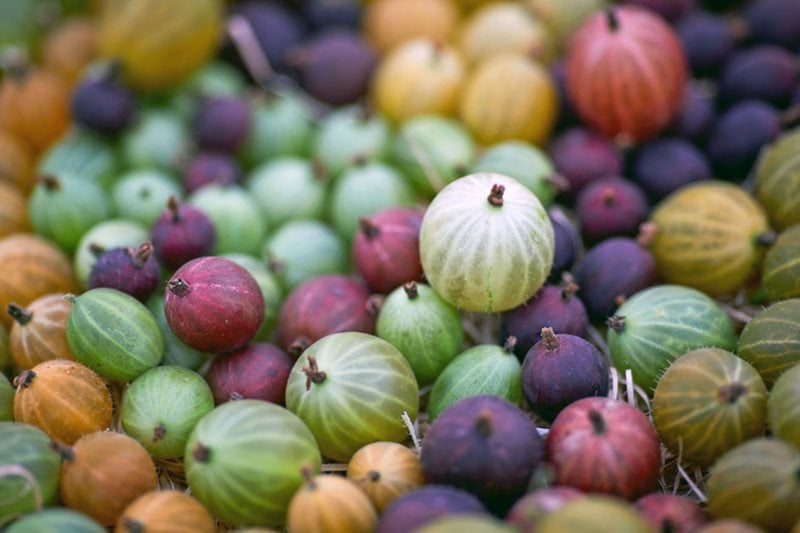
- Botanical name: Ribes uva-crispa
- Origins: Gooseberries are native to temperate areas of Eurasia and North Africa
- First cultivated: The cultivation of gooseberries in England was first recorded in 1276
- Types: Gooseberries come in four colours; red, white, green and yellow
- Skill level: Easy - see RHS advice on growing gooseberries
Did you know?
Cultivation of gooseberries was first recorded in England as far back as the 13th century, however they were not widely grown until the early 1500s - a time when many fruits were being introduced and popularised through increased trade with the Continent. By 1831 the Horticultural Society’s London garden housed a collection of 360 different gooseberry cultivars.
The 19th century saw a great rise in the prominence of the gooseberry, they were so popular that ‘gooseberry clubs’ were formed across the UK, with their members competing to grow the heaviest fruit. They were most numerous in the north of England where a few of these wonderful old clubs are still in existence today. There was even a national publication for enthusiasts called ‘The Gooseberry Growers Register’, which in 1845 listed 171 separate gooseberry shows.
The current world record for the heaviest gooseberry was set in 2013 at 64.49 grams (2.27oz). Which is about the size of a large hen’s egg. It was the first ever gooseberry to weigh more than 40 ‘pennyweights’. For centuries ‘pennyweights’ and ‘grains’ were the traditional measure for the size of gooseberries.
The long history of gooseberries in the UK has led to a great number of local names: ‘Carberry’, ‘Dabberry’, ‘Dayberry’, ‘Dewberry’, ‘Fayberry’, ‘Feaberry’, ‘Fabes’, ‘Fapes’, ‘Feabs’, ‘Feaps’, ‘Goggle’, ‘Golfob’, ‘Goosegog’, ‘Goosegob’, ‘Groser’, ‘Groset’, ‘Grizzle’ ‘Honey-blob’, ‘Thapes’ and ‘Wineberry’, to name few!
‘Gooseberry’ was one of many historic names given to the devil and it is thought that this may be why the ‘unwanted’ third party accompanying a romantic couple is sometimes referred to as a ‘gooseberry’.
We are now most familiar with gooseberries as a jam or used as a fruit in sweetened desserts, but because of their slightly sharp flavour they were traditionally served with fatty meat or oily fish. In France gooseberries are called ‘le groseillier à maquereau’, which can be translated as ‘the mackerel currant’ as they were popularly eaten with mackerel.
The booming gooseberry industry in the UK and across Europe declined sharply in the early 20th century due to the spread of American gooseberry mildew fungus, to which the European gooseberry had no defence. Resistance to the mildew was developed by crossing the European gooseberry with the smaller fruited American wild gooseberries
Ribes hirtellum and
Ribes divaricatum.
European and American gooseberries are members of the
Ribes (currant) family and should not be confused with other distinctly different fruit also known as gooseberries, such as the Chinese gooseberry or kiwi fruit, the Indian gooseberry or Malacca Tree, the Cape gooseberry or Peruvian groundcherry and the Barbados gooseberry - which is a type of climbing cactus.

